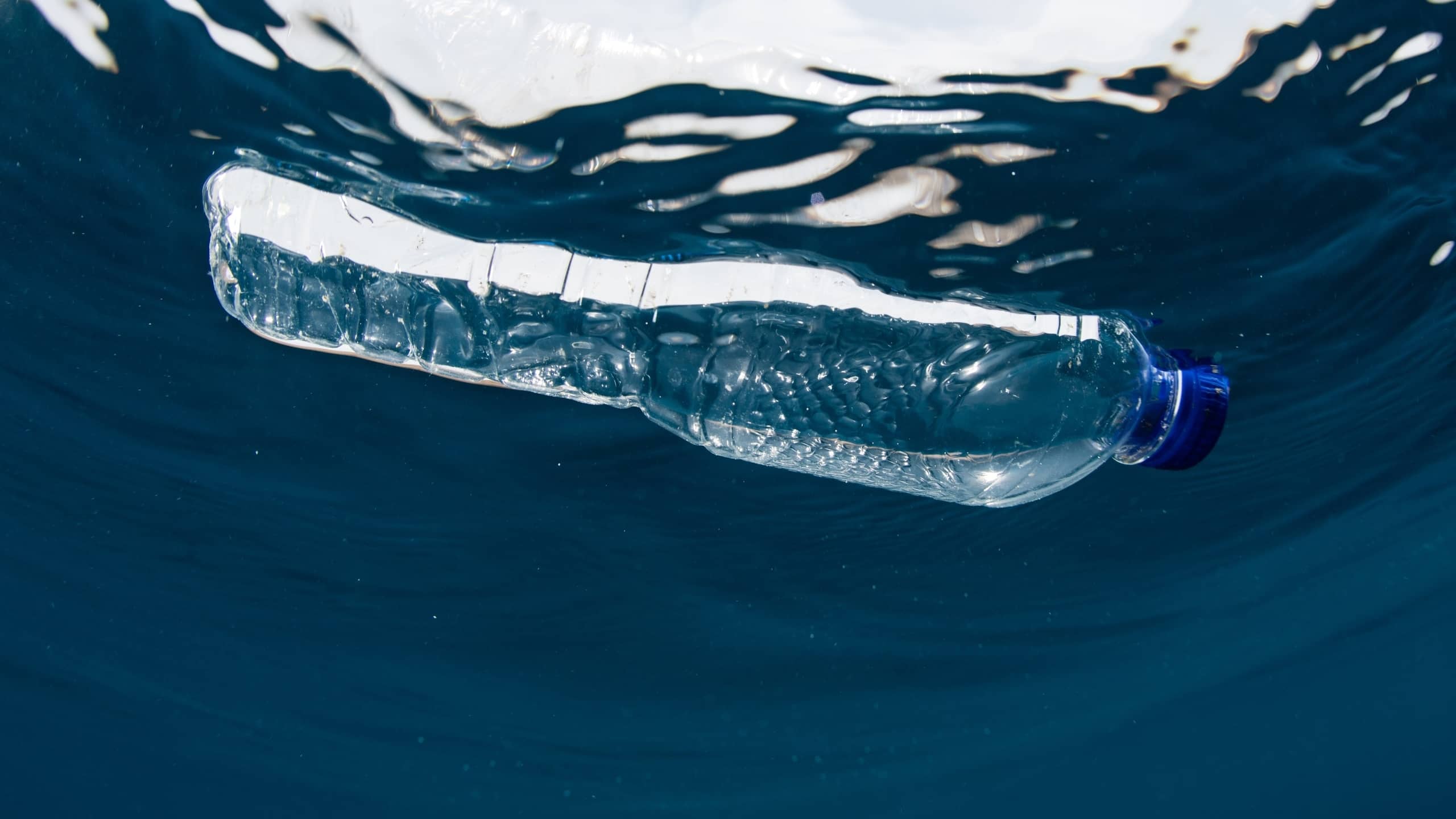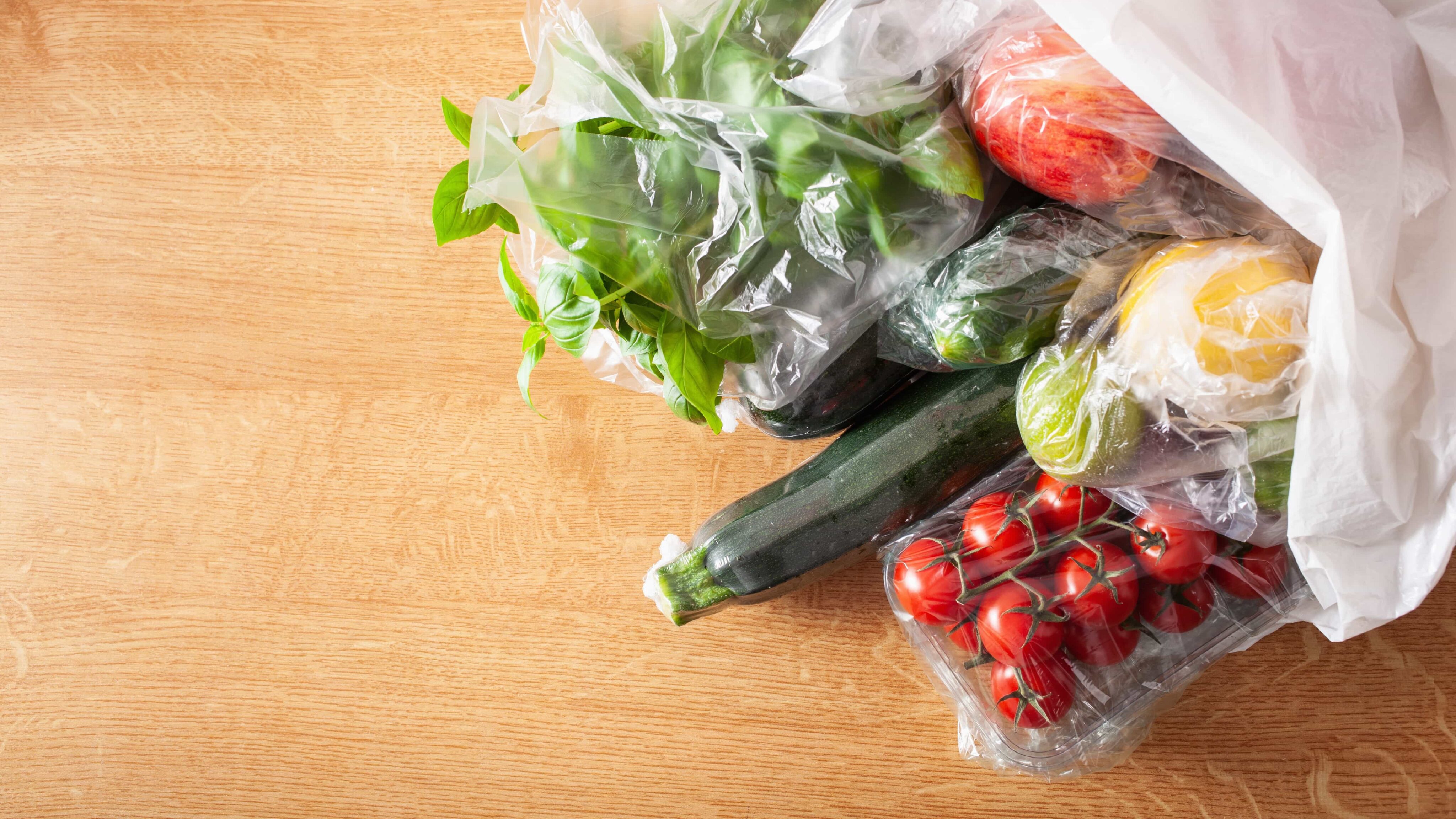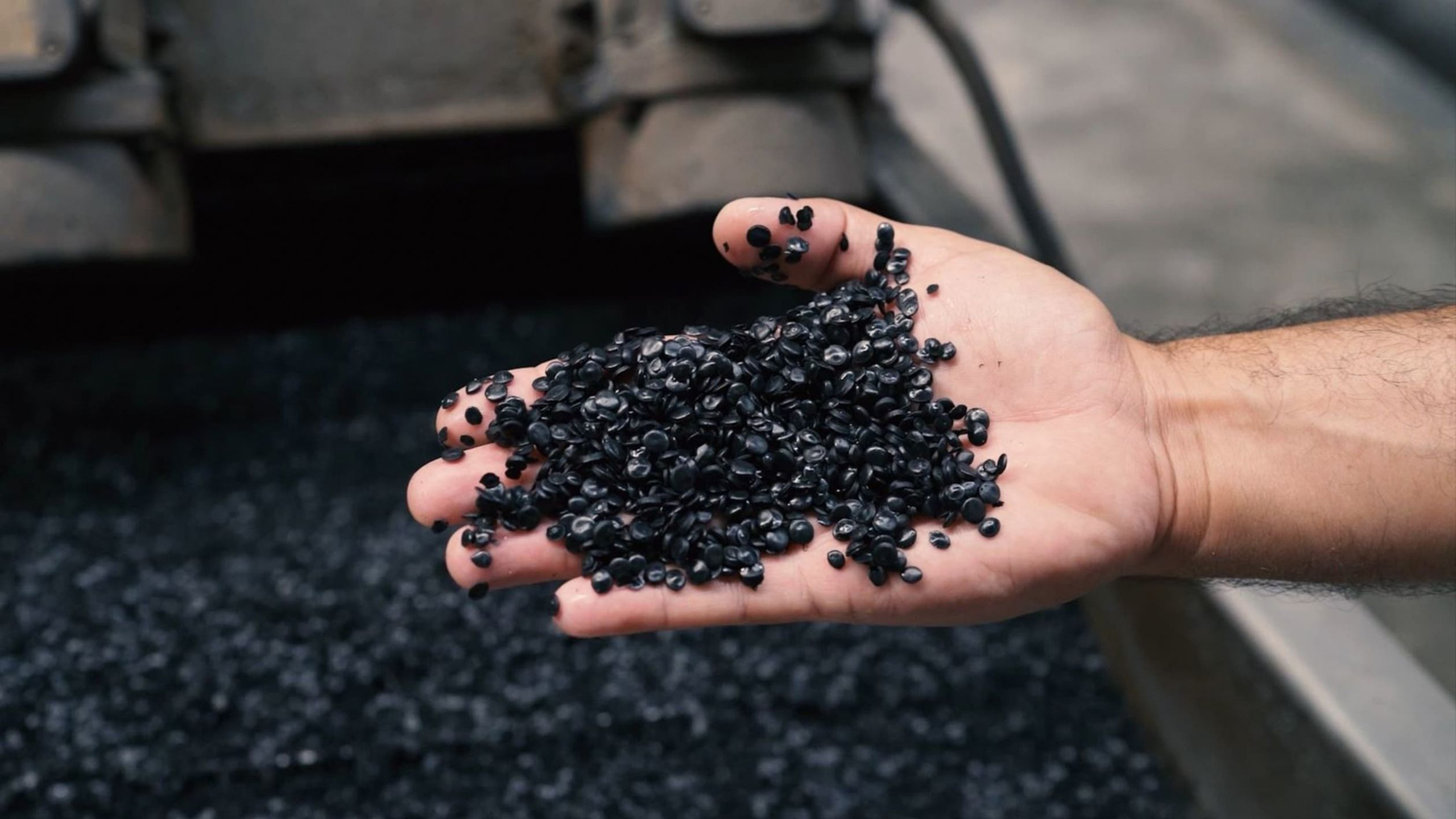Smells fishy? Not really.
There will be more plastic than fish in the sea by 2050.
The warning came in 2016 from the Ellen McArthur foundation, during a meeting of the World Economic Forum. Many years later, the concern remains.
Recent studies say that there are around 269 thousand tonnes of plastic floating in our seas and oceans. The Great Pacific Garbage Patch (located between Hawaii and California), also known as garbage island or plastic island, is over 79 thousand tonnes, and spans over 1.6 million square kilometres – approximately the same land area as Iran.
Even though we refer to plastic as a single item, not all plastics are the same. Some take months to decompose, others might take millennia.
Plastic pollution: different types of plastic in the ocean
Every year, around 350 million tonnes of plastic waste are generated. Of these, around 6 million tonnes are leaked into rivers and coasts, and about 1.7 million tonnes end up in oceans. But what are the different types of plastic in the ocean?
Nylon, polycarbonates, polyester, polyethylene, polypropylene, polystyrene, polyurethane, PVC, PVDC, acrylic, Teflon, silicone, microplastics, biodegradable plastics. Fourteen types of plastic that make up basic, everyday objects – in its vast majority, single-use or with a limited lifespan.
By being discarded incorrectly, these plastics end up in the ocean. Get to know some examples of objects where you can find different types of plastics. By the way, notice how long they take to decompose.
Different types of plastic in the ocean and their decay time
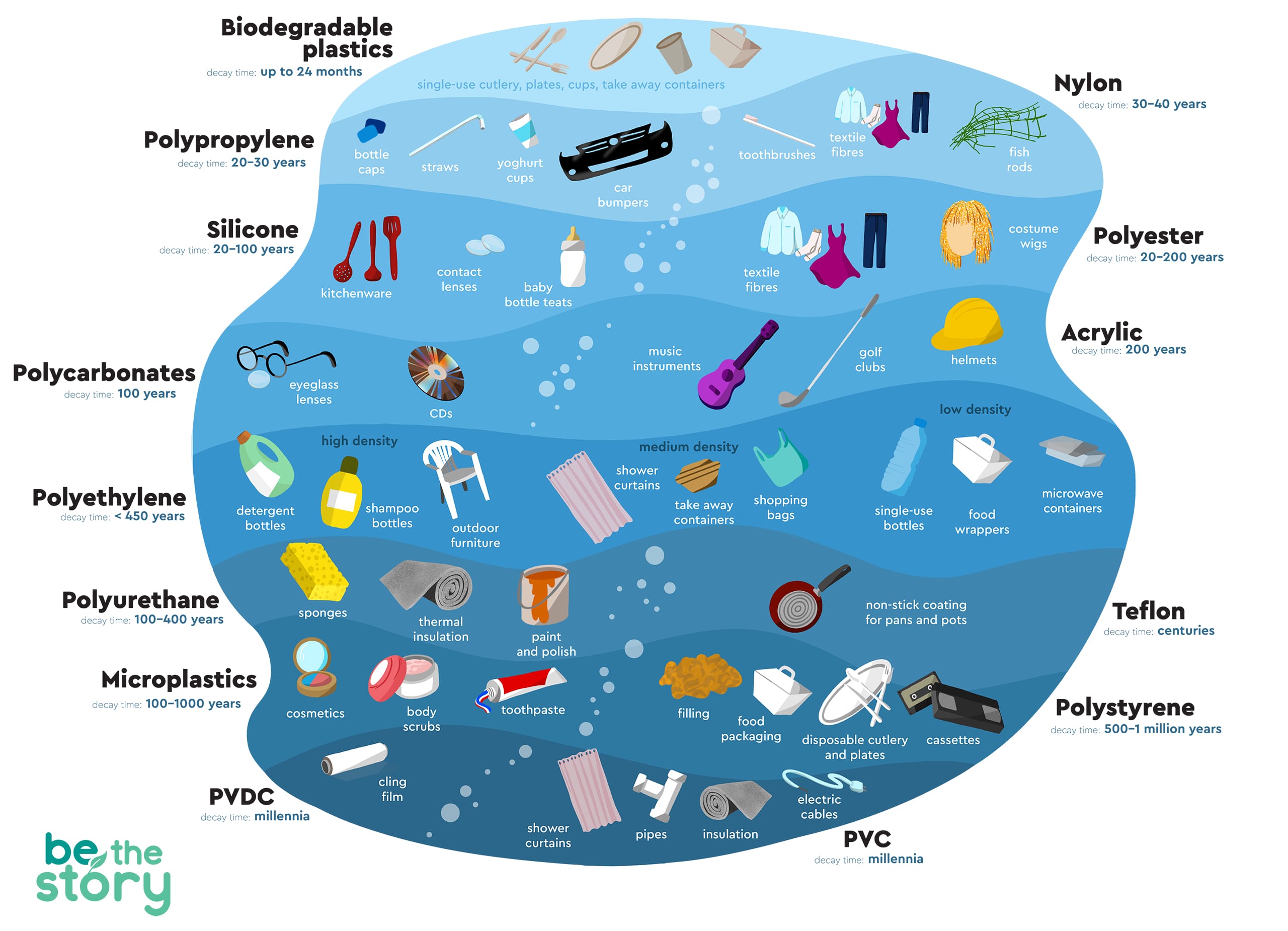
Source: "Waste Timeline", ecoschools.ca
-
Biodegradable plastic
It takes up to 24 months to decompose and can be found in single-use items (cutlery, plates, cups, takeaway containers).
-
Polypropylene
It takes 20 to 30 years to decompose and can be found in bottle caps, straws, yoghurt cups and car bumpers. Bottle caps are one of the fatal marine debris for sea life, as they are frequently mistaken for food and ingested by fishes and turtles.
-
Nylon
It takes 30 to 40 years to decompose and can be found in toothbrushes, textile fibres, fish rods, and fishing nets.
-
Silicone
It takes 20 to 100 years to decompose and can be found in kitchenware, contact lenses and baby bottle teats. Contact lenses are denser than water, so they sink to the bottom of the oceans, where they can be ingested by bottom feeders.
-
Polyester
It takes 20 to 200 years to decompose and can be found in textile fibres or wigs. Polyester in textiles breaks down to microplastics easily during washing.
-
Polycarbonates
It takes 100 years to decompose and can be found in eyeglass lenses or CDs. When polycarbonates break down, they produce BPA, a toxic chemical that disrupts hormonal cycles in marine life.
-
Acrylic
It takes 200 years to decompose and can be found in musical instruments, golf clubs, helmets and clothing. Acrylic clothing is one of the main sources of microplastic pollution in the ocean.
-
Polyethylene
It takes more than 450 years to decompose and can be found in detergent bottles, shampoo bottles, outdoor furniture, shower curtains, take away containers, shopping bags, single-use bottles, food wrappers and microwave containers.
-
Polyurethane
It takes 100 to 400 years to decompose and can be found in sponges, thermal insulation, paint and polish.
-
Teflon
It takes centuries to decompose and can be found in non-stick coating for pans and pots.
-
Microplastics
It takes 100 to 1000 years to decompose and can be found in cosmetics, body scrubs and toothpaste. Microplastics can also form from the decomposition of larger pieces of different types of plastic. Microplastics can easily end up in the human food chain.
-
Polystyrene
It takes 500 to 1 million years to decompose and can be found in filling, food packaging, disposable cutlery or cassettes.
-
PVDC
It takes millennia to decompose and can be found in cling film.
-
PVC
It takes millennia to decompose and can be found in pipes, insulation, electric cables and shower curtains.
Plastic pollution is not going away
Although plastic was accidentally discovered more than a century ago, this material has only become extremely popular in the 1970s. Most of all the plastic ever produced still exist to this day – some plastics can take up to a million years to decompose.
The Great Pacific Garbage Patch isn’t an isolated incident. There are many millions of tonnes of many types of plastic in the oceans, rivers, and lakes of the world. This plastic pollution isn’t always floating either – much of it sinks to the bottoms, making it very hard to quantify exactly.
Top 10 plastic items found in beaches
A study carried out by the Earthwatch Institute in 2019 reveals the ten items most commonly found in beaches and rivers in Europe.
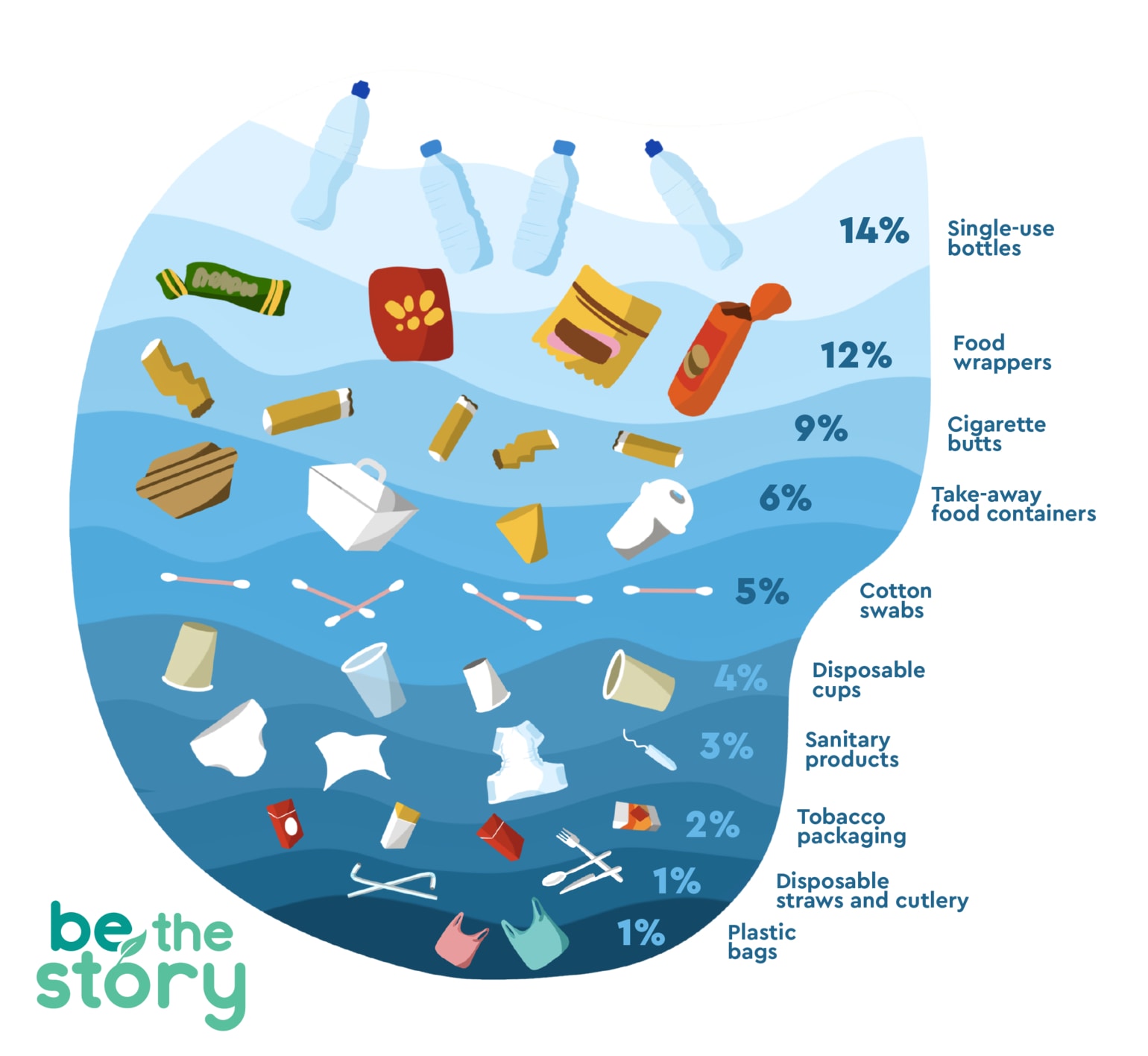
Source: Earthwatch Institute
14% Single-use bottles; 12% Food wrappers; 9% Cigarette butts; 6% Take-away food containers; 5% Cotton swabs; 4% Disposable cups; 3% Sanitary products; 2% Tobacco packaging; 1% Disposable straws and cutlery; 1% Plastic bags.
Each of these objects can be composed of various types of plastics. Nappies, sanitary towels or cigarette butts can contain up to a dozen different plastics. Do you know zero-waste hygiene? From reusable nappies to menstrual cups, it is possible to reduce waste and plastic pollution from sanitary objects.
Causes of plastic pollution
Recent studies reveal that more than three-quarters of all the floating plastic pollution in the Great Pacific Garbage Patch (GPGP) comes from the fishing industry. Around 15% of the plastic pollution (by mass and number of plastic objects) comes from household items. Another 13% of the total plastic items found in the GPGP were associated with food and drinks – mostly bottle caps and lids.
However, most types of plastic in the ocean are unidentified fragments. It is thought that they are a direct result of incorrect macroplastics disposal. The OECD Global Plastics Outlook Database says only about 9% of the global plastics are recycled, 19% are incinerated (for energy, for example), 22% are mismanaged – possibly ending up in the oceans, rivers and lakes – and the vast majority, 49% are landfilled.
Some types of plastic are essential
Although it can be regarded as the environment’s number one enemy, plastic and its applications are completely essential nowadays – namely in medicine or science.
We refer both to plastics used in high technology, such as PEEK (polyether-ether-ketone), used in a variety of medical implants or even to recreate skulls in neurosurgery, and to more common types of plastic, like polyethylene, which has important applications in spacecraft.
At the same time, the discovery of plastic has brought more effective ways to protect and preserve food, extend shelf life, thus contributing to fighting food waste, or even reduce the carbon emissions associated with product distribution.
Solutions to plastic pollution
The problem does not lie in the use of plastic itself, but rather in how it is disposed. So, a good start would be to Reduce, Reuse, Recycle, to which you can add two more actions – Rethink and Refuse.
Small changes during your day can also go a long way towards reducing the 150kg of plastic waste each European produces a year. Need a few ideas? Between having a reusable water bottle and always carrying a reusable bag with you, we have 8 tips that will help you to keep a distance from plastic.
But there is more to be done. Get inspired by some zero waste shopping tips.
